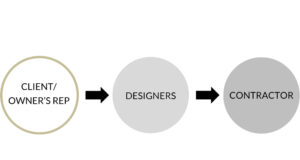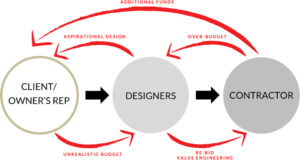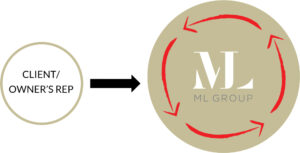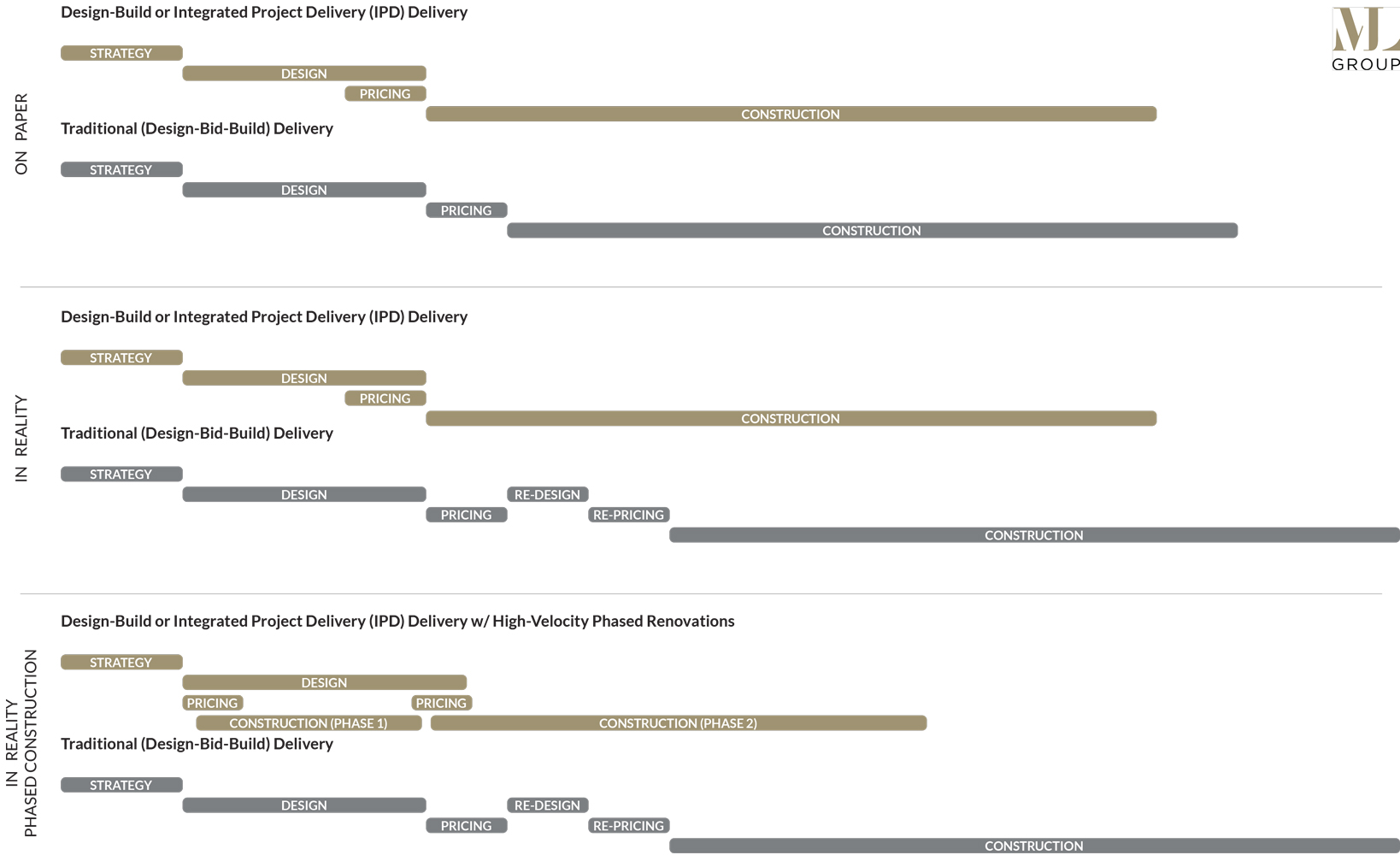At ML Group, we prioritize collaboration and efficiency in every project we undertake. By leveraging Integrated Project Delivery (IPD) and design-build models, we consistently deliver projects faster, with fewer risks and better alignment with our clients’ goals. These approaches contrast sharply with the traditional design-bid-build method, which, while often appearing to be the cheapest option upfront, frequently leads to delays, budget overruns, and adversarial relationships between stakeholders.
The Challenges of Design-Bid-Build

The traditional design-bid-build delivery method is a linear process where the owner hires a designer to develop a design. The general contractor then bids on what it would cost him to build that design. While this approach can initially appear to be the most cost-effective due to competitive bidding, it often introduces significant risks that can outweigh those upfront savings:
- Budget Misalignment: Designers focused on fulfilling the client’s vision may lack detailed insight into construction costs. This frequently leads to designs exceeding the budget, forcing clients to pay more or endure costly and time-consuming redesigns.
- Adversarial Relationships: Contractors may submit low bids to win projects, intending to increase revenue through change orders when they find errors or omissions in the design. This approach creates tension and mistrust between designers, contractors, and even the owners.
- Prolonged Timelines: The sequential nature of design-bid-build delays pricing and pre-construction planning until after the design phase is complete. This lengthens the project schedule and pushes back the start of construction.

While design-bid-build is initially cheaper, these inefficiencies often result in costly delays, budget overruns, and even disputes that require mediation or litigation, compounding the overall project cost and risk.
The Collaborative Advantage of Design-Build and IPD
In design-build and IPD models, collaboration replaces conflict. These delivery methods bring designers, contractors, and clients together as a unified team from the project’s inception, ensuring a shared focus on cost, schedule, and quality.
- Streamlined Communication: Fostering a collaborative environment enables potential issues to be identified and resolved earlier in the design process, reducing costly surprises during construction.
- Accelerated Schedules: Pricing and pre-construction planning begin as soon as the design team completes permit drawings, eliminating the lag inherent in the design-bid-build process. Projects often see timelines reduced by up to 30%, allowing clients to monetize assets sooner and reduce carrying costs.
- Cost Certainty: With contractors involved early, material costs, construction methods, and budget constraints are factored into the design from the beginning, minimizing redesigns and budget overruns.
These benefits demonstrate why integrated delivery models are preferred for clients seeking efficiency, reduced risk, and faster results.
Taking Integration Even Further for High-Velocity Redevelopment Projects
 While integrated delivery models already create significant efficiencies, ML Group takes this approach even further for projects requiring high-velocity renovations—such as multi-family housing renovations, healthcare facilities, and hospitality conversions—where phasing is critical.
While integrated delivery models already create significant efficiencies, ML Group takes this approach even further for projects requiring high-velocity renovations—such as multi-family housing renovations, healthcare facilities, and hospitality conversions—where phasing is critical.
For these asset types, keeping spaces operational while executing renovations is a key challenge. Our integrated approach allows us to phase construction to minimize disruptions to tenants, patients, guests, and ongoing business operations. However, what truly sets us apart is our ability to overlap design and construction phases further, eliminating even more time from the overall redevelopment schedule.
- Simultaneous Design & Construction Execution: We often begin design the day after closing, with construction starting within a week. While phased construction reduces operational disruptions, the overlapping of design and construction removes months from the redevelopment/renovation process—time that would otherwise be lost in a traditional sequential approach.
- Strategic Phasing of Work Areas: Coordinating upgrades in amenity spaces, corridors, and residential/guest rooms to ensure portions of the building remain functional throughout construction.
- Early Site & Phasing Evaluations: We often walk through properties with clients pre-closing, helping them assess whether to acquire a building by identifying key renovation challenges and opportunities before they purchase and giving us a head start with design and construction.
By tightly integrating these phases, we drastically shorten project timelines, allowing our clients to begin leasing, operating, or repositioning their assets significantly sooner. Our approach reduces carrying costs, accelerates revenue streams, and enhances overall project ROI.
See the Difference

The above Gantt chart demonstrates how a design-build or IPD process can reduce project schedules by over 30% compared to the traditional design-bid-build model. We achieve this efficiency by reducing the project’s critical path through overlapping design, pricing, and pre-construction tasks.
We’ve also included diagrams illustrating the pitfalls of the design-bid-build approach and how integrated models like IPD eliminate these inefficiencies.
How ML Group Maximizes ROI Through Integration
At ML Group, we often go beyond the standard benefits of design-build and IPD. Our development-centric approach allows us to engage with clients early in the project lifecycle, developing phased construction strategies that further optimize schedules. By considering the big picture, we help clients reduce construction loan durations and realize revenue streams sooner, driving maximum return on investment (ROI).
One key to our success is our ability to seamlessly collaborate with external designers, architects, and consultants. Whether we’re working as the general contractor or as part of a fully integrated team, our commitment to Integrated Project Delivery (IPD) principles ensures that every project benefits from a unified strategy.
Contact us to discuss further.


